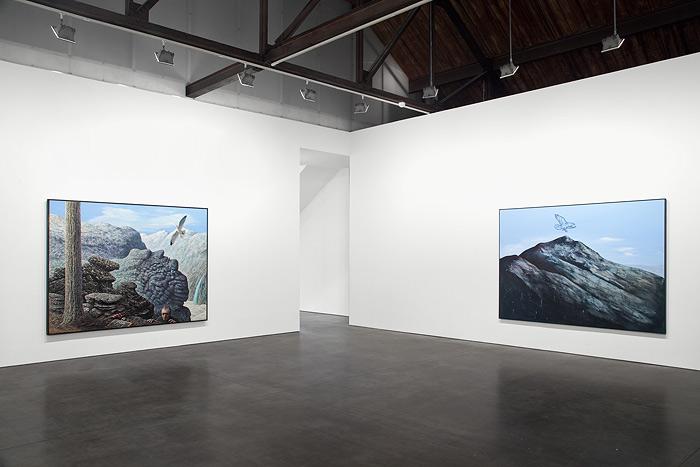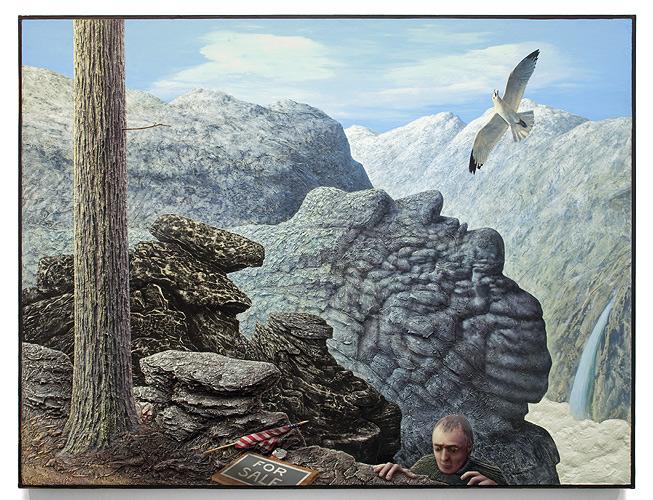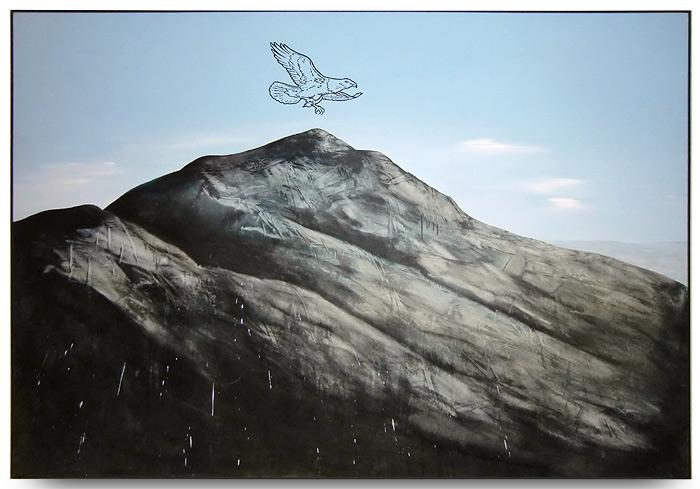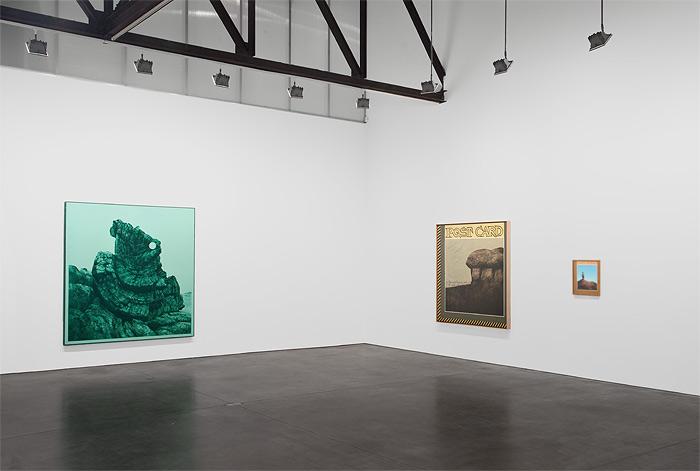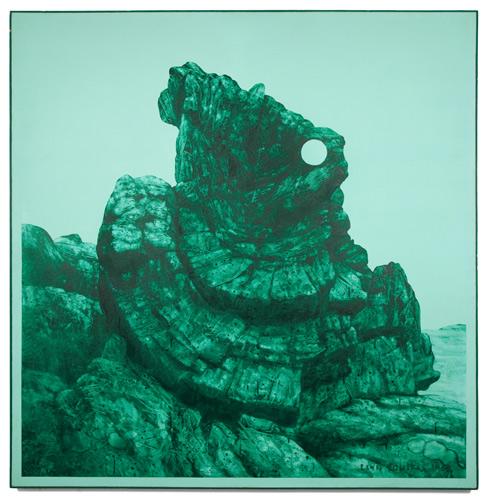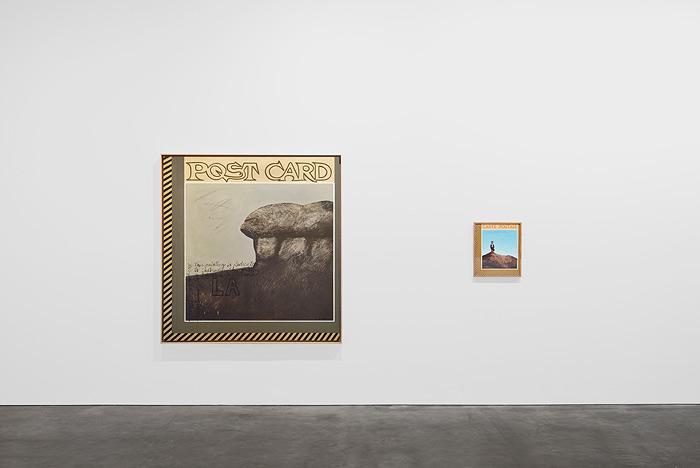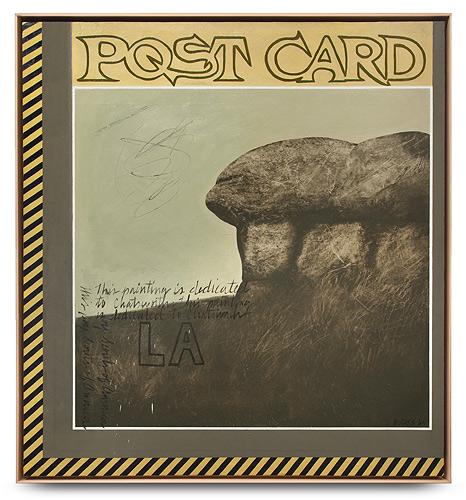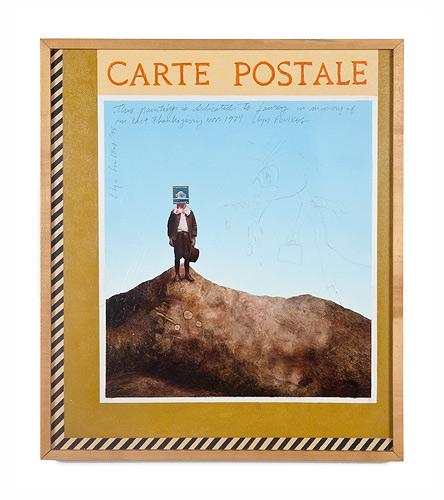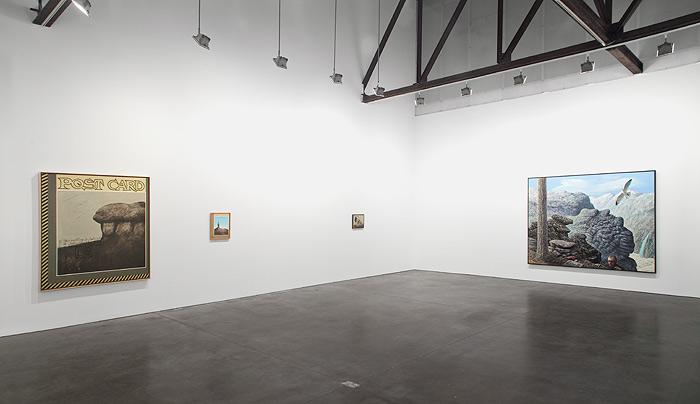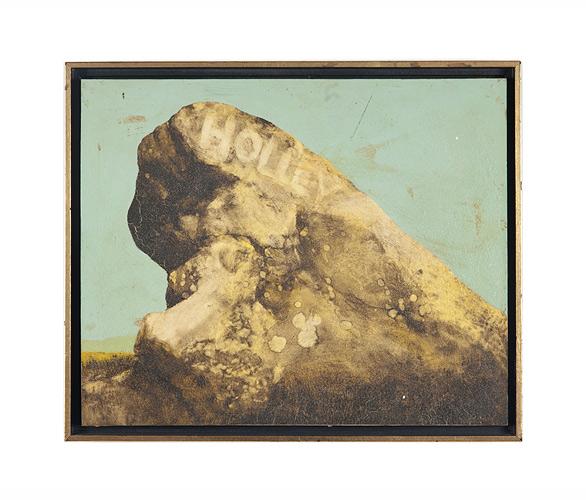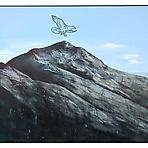Llyn Foulkes
October 28 – December 3, 2011
Main Gallery
We are extremely excited to present a focused study of Llyn Foulkes paintings revolving around the presence of the rock imagery spanning from 1963 to 1991. As a legendary figure and pioneer beginning in the 1960's, Foulkes' influence within the LA community is both "vast and unquantifiable*" and while he has a deep following he is just now beginning to get his full recognition. Over the past number of years, his work has been included in seminal exhibitions from LA MoCA's Helter Skelter (1992), the Hammer's Nine Lives: Visionary Artists From L.A. (2009), to the Venice Biennale (present) which has brought a growing awareness and clarity to the wide range of his influence and the powerfulness of his unique artistic territory.
In the past two years we have been carefully researching Foulkes' complete oeuvre and are delighted to present an extremely specialized exhibition that studies Foulkes' landscape paintings and our multi-faceted and veiled relationship to nature. We intentionally chose one distinct, concise group of seven works for two reasons; one, to not distract from the upcoming major retrospective at the Hammer Museum, organized by Ali Subotnick and planned for February 2013, which will present a comprehensive and extensive survey; and two, to take a re-appearing thread of the landscape in Foulkes' work to discuss a specific content within Foulkes' overall body of work, and also demonstrate the incredible variation and nuanced use of description and material within this specific thread. There is always a struggle between the surface and the materials versus the story, but at all times the work pushes us to continuously question what are we looking at. This is the western landscape, the last frontier, the land of promises, but it is full of illusions, sometimes anthropomorphic, and certainly a landscape that no longer exists. Somewhere between assemblage and flat edge pop, the works are haunting, and speak to the daunting sense of isolation and loneliness in the face of shifting cultural values. In these landscapes, as well as in Foulkes' overtly more political series of "bloody heads" (portraits whose faces have been violently obscured by paint or canceled by collage), Foulkes points out the hypocrisy and guilt within our culture both past and present, within which we can clearly trace Foulkes' unrelenting drive to put himself and his surroundings into his paintings. There is a trickery of being enticed into the paintings through the whole nuance of the long history of landscape paintings, and the mastery of his technique, until we are trapped within the content of the work.
The works in the exhibition range from paintings marked by 'water stains' resembling the patina of vintage photographs to Foulkes' tableaux paintings, which are constructed on a massive scale, exhaustingly carved into with a sandblaster, collaged with plaster, paint, and found objects (such as two Coke cans, an American flag, and a tree branch in "Lost Horizon," 1991). Because they can take up to eight years to make, they become almost organic living, breathing, fossilized relics.
While it is difficult to concisely summarize the significance and prominence of Foulkes' impact within the LA school, it's notable that his work was first shown at the Ferus Gallery in 1961 (the following year, Andy Warhol showed his Campbell's Soup Cans), in the company of Andy Warhol, Ed Kienholz, Ed Rusha, Robert Irwin among others, and later the Rolf Nelson gallery. He had major support from critics, winning the Paris Biennale prize for painting in 1967, and Walter Hopps organized Llyn's first major retrospective at the Pasadena Art Museum in 1962, where the landmark first museum survey of pop art was concurrently on view including works by Roy Lichtenstein, Wayne Thiebaud, and Andy Warhol.
It's also interesting to situate Foulkes amongst his idols ranging from Spike Jones, Charlie Chaplin, to Salvador Dali, and Willem de Kooning (particularly the piece "Merritt Parkway," 1951). In recognizing the equally important role of music in Foulkes life, it's clear that Foulkes is a story-teller, a lone hero. From age 12 to now in his 76th year, he's performed in bands, including appearances with the Doors, the Byrds, on the Johnny Carson show, and now on his legendary "machine" - a surreal one-man band concoction made up of old car horns, a xylophone, cowbells, bass, and drums.
Deeply embedded within these two worlds is the insistence that there are no limits to what can be used as an instrument. For over half a century, Foulkes' singular voice has been continuously seeking, exposing, and re-telling the beauty and bleakness of the American cultural landscape. As Foulkes describes in an interview, "I always believe in the old thing that Picasso said, 'To search means nothing; to find is the thing.' It's like suddenly it's there.** " Foulkes is constantly seeking, and it's a great privilege to see his work in Pacific Standard Time, in six museum shows along the California Coast, and to look forward to his significant place in Documenta 13 where his work, and his machine will also be on view.
*Subotnick,Ali. Nine Lives: Visionary Artists from LA. Los Angeles: Hammer Museum p. 15
**Oral history interview with Llyn Foulkes, 1997 June. 25-1998 Dec.2, Archives of American Art, Smithsonian Institution.
Llyn Foulkes (b. 1934, Yakima, Washington, lives and works in Los Angeles) graduated from the Chouinard Art Institute in 1959 and served in the US Army in Germany from 1954-1956. His solo exhibitions include: Hammer Museum retrospective (forthcoming 2013), "Between a Rock and a Hard Place" Laguna Art Museum (1996), MCA Chicago (1978), the Oakland Museum (1964) among others. His work can be found in the collections of the MoMA, New York, the Guggenheim, New York, the Hirshhorn Museum, Washington D.C., LA MoCA, SF MoMA, AIC, Chicago, and the Centre Pompidou, Paris among others. New works are currently on view at Kent Fine Art, New York, NY, "Llyn Foulkes: Bloody Heads," October 27 – December 17, 2011.
For more information and images please contact Jessica Eckert j.eckert@rosengallery.com or Nen Reyes r.reyes@rosengallery.com
